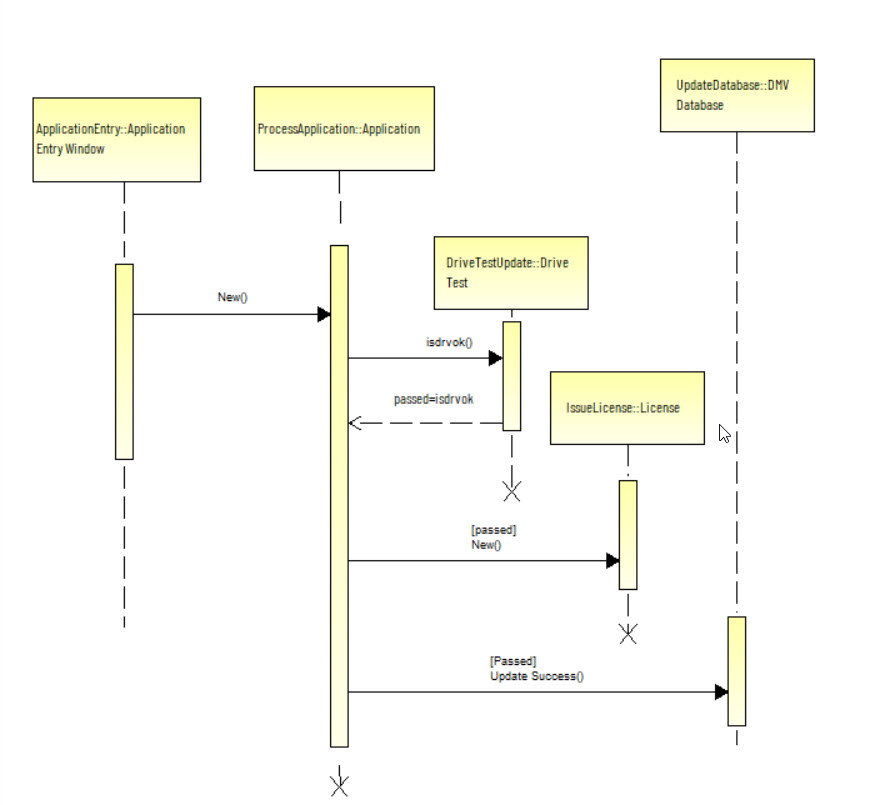
Start by looking at a Use Case scenario.
Break down the scenario into a sequence of messages.
A sequence diagram is a type of interaction diagram. Interaction diagrams describe how groups of objects interact and collaborate in performing a behavior. There are two types of interaction diagrams that basically model the same information: sequence diagrams and collaboration diagrams.
In a sequence diagram, the interaction is modeled in a time sequence displaying objects participating in the interaction and the messages that are passed among these objects. The diagram shows the objects by their ''lifelines'' and the messages that they exchange arranged in time sequence. It does not show the associations among the objects. The associations can be obtained from the complementary collaboration diagram.
The business analyst may create a sequence diagram to explore the following questions:
- What objects are included in the scenario?
- What messages are sent and received?
- What is the sequence of the messages?
